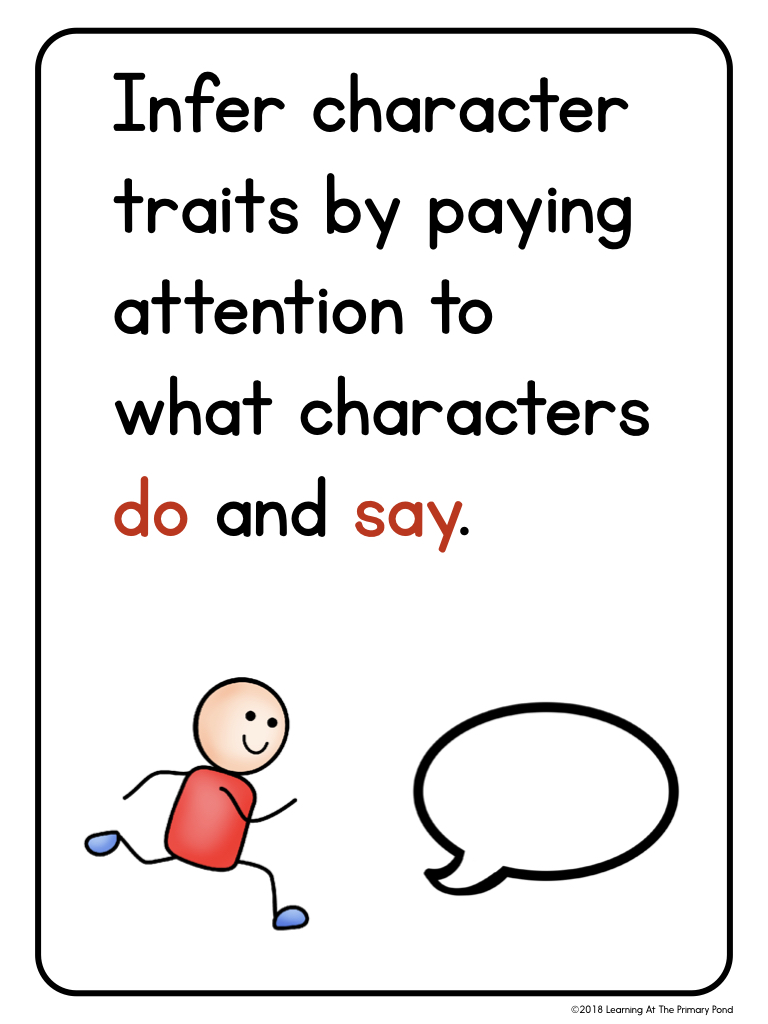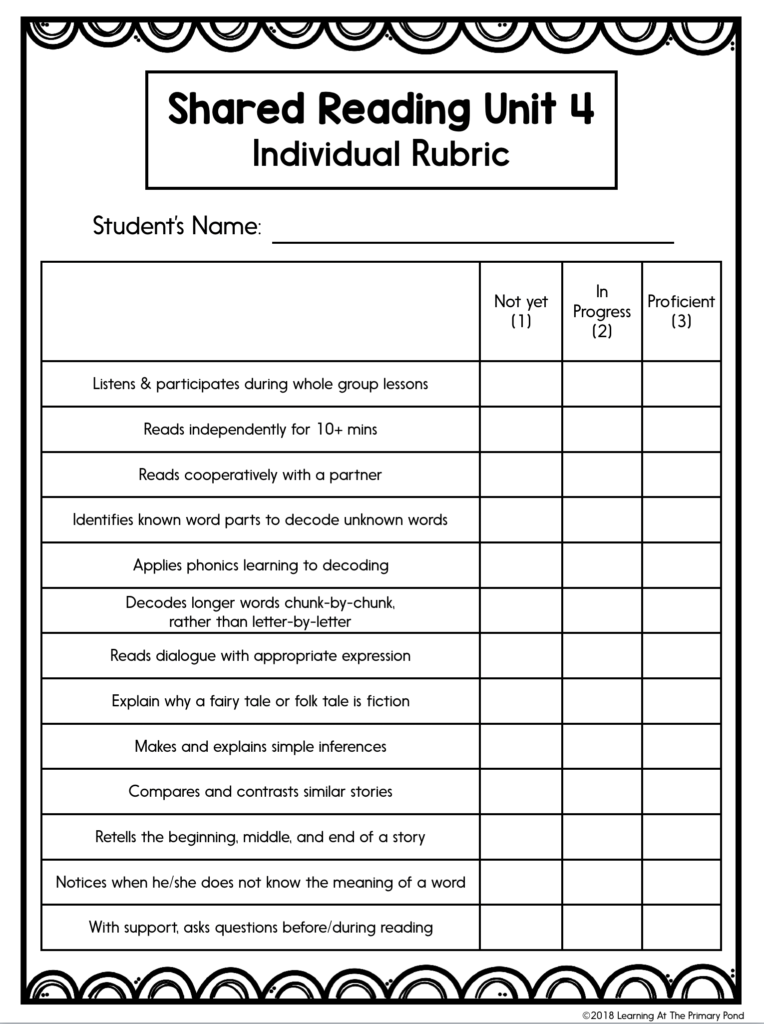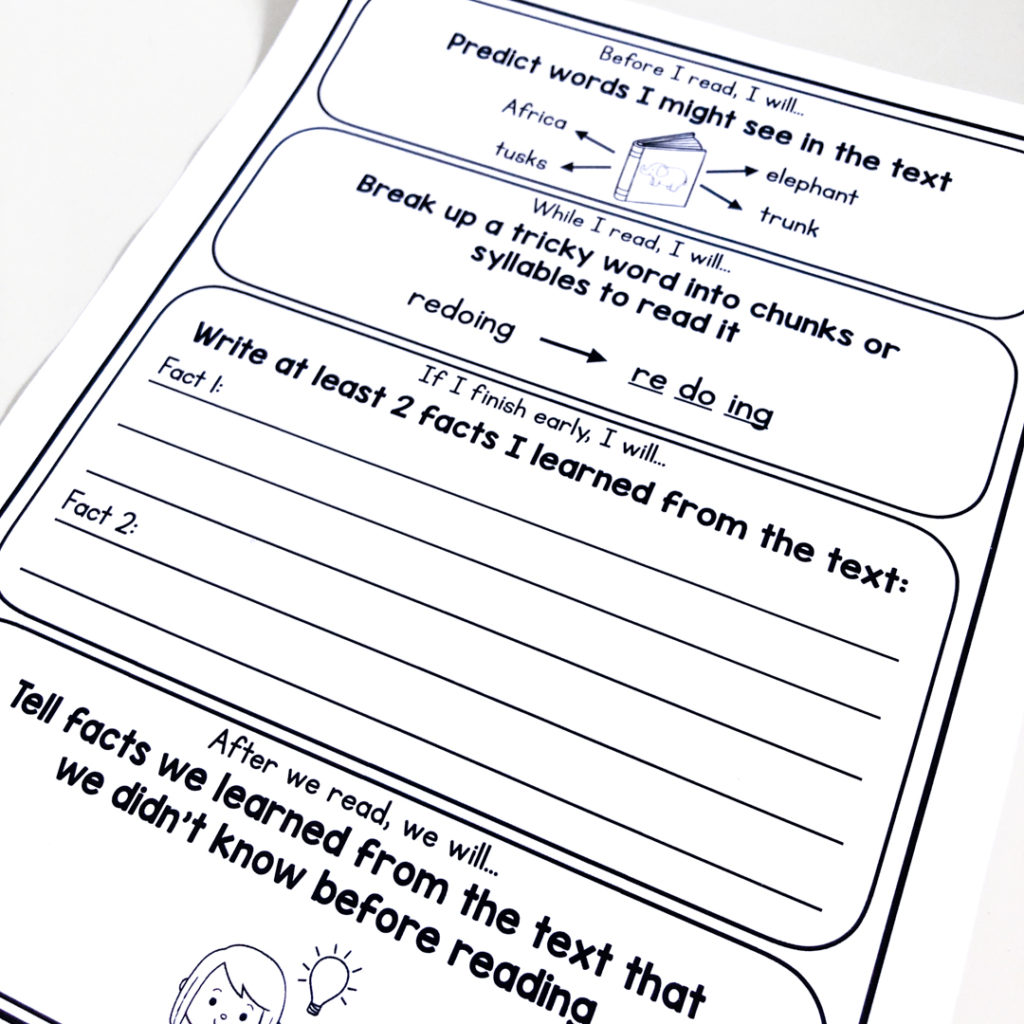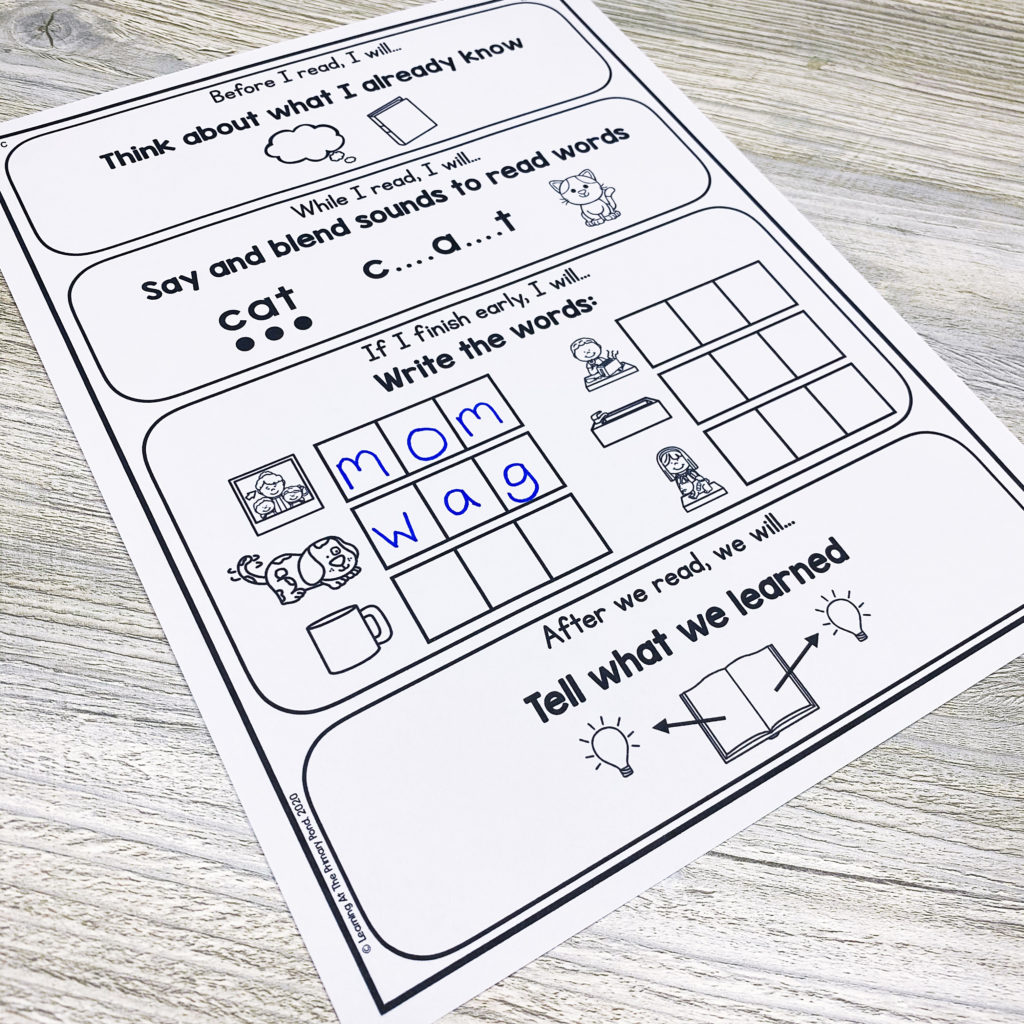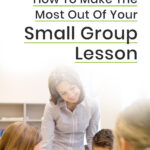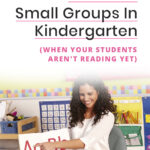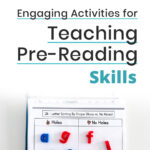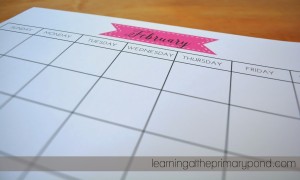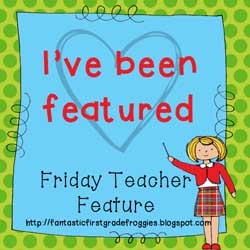Earlier in my teaching career, whenever I was teaching reading to a small group of students, we were always doing guided reading.
I thought…
guided reading = small group reading
(That they were basically the same thing!)
Here’s what I’ve learned, though:
If I only do “true” guided reading for EVERY small group reading lesson, my kids miss out on:
- Opportunities to read grade-level text (with my support) — this can help lower readers bridge the gap!
- Small group discussions with peers at different reading levels
- The chance to participate more fully in certain literacy routines — like shared reading or a read-aloud — that English Language Learners or quieter students may struggle with in a whole group setting
So now I try to include a variety of small group reading activities, not just guided reading!
In this post, I’ll explain why (and how) I use the following types of small group instruction, in addition to guided reading:
- Strategy groups
- Supported reading of grade-level texts (for lower students)
- Small-group shared reading and read-alouds
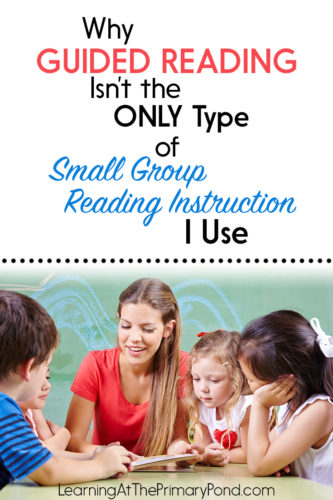
Strategy Groups
Have you heard of a strategy group before?
Strategy groups:
- Teach students a reading strategy that will help move them forward as readers
- Often use students’ self-selected books rather than teacher-selected books
- Give kids a chance to interact with peers at different reading levels
- Provide an opportunity for you to bring the focus of your whole-group reading instruction into your small groups
- Help students bridge the gap between what they’re learning in whole-group reading (and even guided reading) and their independent reading
To explain why strategy groups can be helpful, let’s look at a concrete example.
Let’s say I’m teaching second grade reading. In our whole group lessons, we’ve been working on character traits.
During shared reading and read-alouds, my students are doing well with identifying character traits and supporting them with text evidence.
Additionally, during guided reading groups, we’ve also been working on character traits. When prompted, they can identify a character’s traits and use text evidence to justify them.
But I find that 6 or 7 of my students are NOT applying this knowledge to their independent reading. They’re all at different reading levels.
So I could meet with each of these students individually, as they read independently.
But that’s not very efficient, is it? When you have multiple students with the same need, it doesn’t make sense to teach the same thing over and over.
Instead, I can bring them together in a strategy group. (It’s okay that they’re not all at the same reading level!)
I ask each student to bring a chapter book that they’ve been reading (most are reading beginning chapter books, nothing too lengthy).
I begin the group by saying: “We’ve been working on identifying character traits together. Today I want to show you that you can identify character traits while you’re reading, too! I’m going to show you how to stop after a chapter, review the character’s actions, and see if you can brainstorm a trait for the character.”
Next, I take out a chapter book that the kids are familiar with (something I’d been reading in class). I quickly review the chapter with them, reminding them of what the character did and said.
Then, I say, “Based on this chapter, I think the character is ______ because ______.” Model how you write that on a sticky note.
Next, have students read the next chapter (or part of the next chapter) in their own books — the books they’ve self-selected for independent reading.
Provide students with sticky notes and ask them to write a character trait word on it (either when they finish the chapter or when you have them stop).
After students are finished (maybe 5-7 minutes of reading time, while you’re briefly touching base with each student as they read), they might share their character traits with the group or share with a partner.
Then, you wrap up by reminding them to continue doing this as they read on their own.
Strategy group complete!!
There are lots of great ways to teach strategy groups, but in this example, note how:
- Students at different reading levels had a chance to come together and discuss a strategy.
- I helped my students bridge the gap between whole group instruction and their independent reading (they directly applied the lesson to books they had chosen to read).
- I had an opportunity to very quickly touch base with each student individually, as they read without having to dash around and complete individual reading conferences.
Supported Reading of Grade-Level Texts
In a traditional guided reading lesson, students read instructional-level text. (This means they’re reading text that’s a bit harder than what they could successfully decode and comprehend independently.)
In my experience, having students read instructional-level text is helpful. They have the feeling of being successful, thanks to teacher support. But they’re also being challenged a bit.
And that’s great. But what if a student is reading far below grade level?
If they’re only ever working with text that’s a little bit hard…how will they bridge the gap and eventually catch up to their peers?
I’ve come to believe that it’s important for kids to have reading experiences with texts at a variety of levels, not just their independent and instructional levels. We have to get them “closer” to reading at grade-level, so that means they should have experiences working in grade-level text.
Years ago, during my master’s program, I worked in a university reading clinic. I worked with elementary and middle school readers who were reading below grade-level, and we used scaffolding to help them be successful with grade-level text.
And guess what? It worked!
If you’d like to try out this type of small group instruction, it doesn’t require a lot of re-arranging. (Yay!)
You can keep students in their same guided reading groups for this type of lesson. You can even – more or less – follow the same guided reading lesson outline.
However, you adjust the text introduction and other elements of the lesson so that students can successfully decode and comprehend the text.
I’ll go over this type of small group lesson in more detail in an upcoming blog post! In that post, I’ll explain exactly what to do so that a challenging text is accessible to a group of students who don’t read at that level yet.
Small Group Shared Reading and Read-Alouds
Strategy groups and supported reading of grade-level text make up most of my “not guided reading” groups.
However, sometimes I’ll throw in a shared reading or read-aloud in a small group. (Learn about the differences between these two instructional practices in this post.)
I do a small group shared reading if:
- I need to teach students a skill / strategy, but I need to do more modeling than a typical guided reading lesson includes.
- My whole-group shared reading lessons aren’t quite hitting what a certain group of students need (typically because they’re at a lower or higher level than most students).
I do a small group read-aloud if:
- I have some English Language Learners who would benefit from hearing a book read aloud before I read it aloud to the class (or afterward, for a second shot).
- I have some quieter students, students who have speech/language disabilities, or students who struggle to participate during whole-group read-alouds for whatever reason.
- I have some reluctant readers who just need to be reminded that reading can be fun! (I love this “quality time” with them, spent enjoying a book that I know they’ll love.)
- I want to challenge my higher students with some really thought-provoking comprehension work.
Honestly, I don’t do shared reading or read-alouds in a small group setting often.
But once in a while, they can be just what I need to support my students!
So this is your friendly reminder that taking these activities to your small group is always an option! 🙂
Picking and Choosing Among Groups (While Staying Sane!)
Oh boy, this might feel like a lot…right? It’s hard enough to make a guided reading schedule, let alone incorporate several other types of groups!!
First, take a deep breath! 🙂
Remember that, if you want to use guided reading, your schedule can still stay the same most days. Maybe you set aside 1 day a week for strategy groups.
If you want to support your lower readers in grade-level text, you can do that within your normal guided reading schedule and groupings.
What helps me the most is staying grounded in my goals for my students. I always keep a list of the reading skills / strategies I’m teaching on my clipboard — something like this:
Small groups help us meet those goals; they’re not an end within themselves.
I hope this post was helpful to you! If you need materials for teaching reading in a small group setting, check out my interactive guided reading mats.
Happy teaching!

